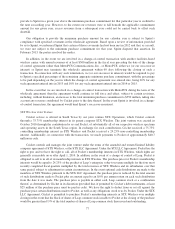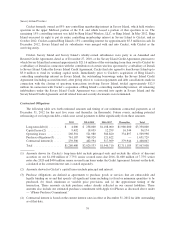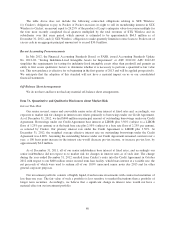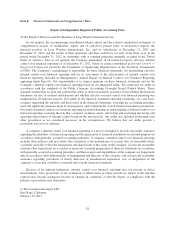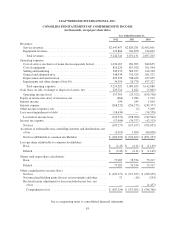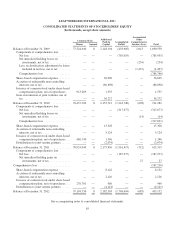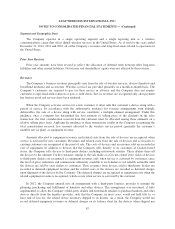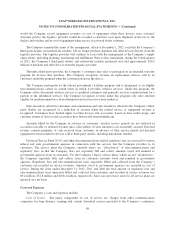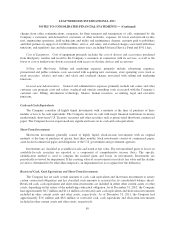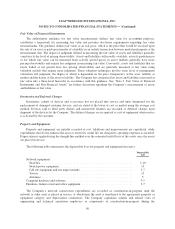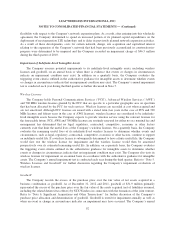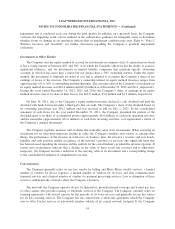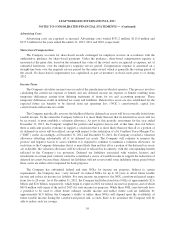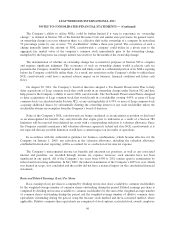Cricket Wireless 2012 Annual Report Download - page 101
Download and view the complete annual report
Please find page 101 of the 2012 Cricket Wireless annual report below. You can navigate through the pages in the report by either clicking on the pages listed below, or by using the keyword search tool below to find specific information within the annual report.LEAP WIRELESS INTERNATIONAL, INC.
NOTES TO CONSOLIDATED FINANCIAL STATEMENTS — (Continued)
Segment and Geographic Data
The Company operates in a single operating segment and a single reporting unit as a wireless
communications carrier that offers digital wireless services in the United States. As of and for the years ended
December 31, 2012, 2011 and 2010, all of the Company’s revenues and long-lived assets related to operations in
the United States.
Prior Year Revision
Prior year amounts have been revised to reflect the allocation of deferred rents between other long-term
liabilities and other current liabilities. Net income and shareholders’ equity were not affected by this revision.
Revenues
The Company’s business revenues principally arise from the sale of wireless services, devices (handsets and
broadband modems) and accessories. Wireless services are provided primarily on a month-to-month basis. The
Company’s customers are required to pay for their service in advance and the Company does not require
customers to sign fixed-term contracts or pass a credit check. Service revenues are recognized only after payment
has been received and services have been rendered.
When the Company activates service for a new customer, it often sells that customer a device along with a
period of service. In accordance with the authoritative guidance for revenue arrangements with multiple
deliverables, the sale of a device along with service constitutes a multiple element arrangement. Under this
guidance, once a company has determined the best estimate of selling price of the elements in the sales
transaction, the total consideration received from the customer must be allocated among those elements on a
relative selling price basis. Applying the guidance to these transactions results in the Company recognizing the
total consideration received, less amounts allocated to the wireless service period (generally the customer’s
monthly service plan), as equipment revenue.
Amounts allocated to equipment revenues and related costs from the sale of devices are recognized when
service is activated by new customers. Revenues and related costs from the sale of devices and accessories to
existing customers are recognized at the point of sale. The costs of devices and accessories sold are recorded in
cost of equipment. In addition to devices that the Company sells directly to its customers at Cricket-owned
stores, the Company sells devices to third-party dealers, including nationwide retailers. These dealers then sell
the devices to the ultimate Cricket customer, similar to the sale made at a Cricket-owned store. Sales of devices
to third-party dealers are recognized as equipment revenues only when service is activated by customers, since
the level of price reductions and commissions ultimately available to such dealers is not reliably estimable until
the devices are sold by such dealers to customers. Thus, revenues from devices sold to third-party dealers are
recorded as deferred equipment revenue and the related costs of the devices are recorded as deferred charges
upon shipment of the devices by the Company. The deferred charges are recognized as equipment costs when the
related equipment revenue is recognized, which occurs when service is activated by the customer.
In 2012, the Company entered into an arrangement with a third-party logistics provider to manage the
planning, purchasing and fulfillment of handsets and other devices. The arrangement was structured, if fully
implemented, to allow the Company’s third-party dealers and nationwide retailers to purchase handsets and other
devices directly from the logistics provider, such that the Company, in most cases, would not hold title to, or
have risk of loss for, the related device inventory shipped to its dealers. As a result, the Company would not
record deferred equipment revenues or deferred charges on its balance sheet for the devices when shipped nor
87


